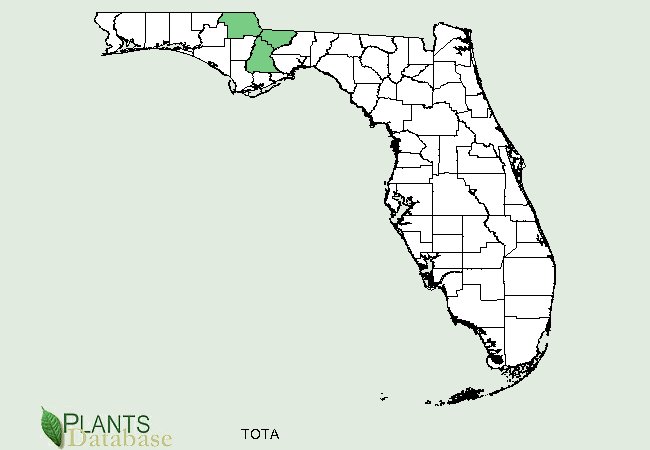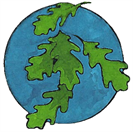


Botanical
Florida Torreya, Torreya taxifolia, is a conifer in the Yew (Taxaceae) family found only in Georgia and Florida. It typically grows between 30-40 ft in height but once stood up to 50 ft. Sadly, there are no large trees left in their natural habitat. Florida Torreya is on the federal list of endangered species as well as Florida and Georgia's. It is estimated there are only 1,500 trees left in the wild and its demise has been attributed to habitat destruction. A global rank of G1, meaning critically imperiled, has been assigned to this species. Generally, it reaches 12-20 inches in width and has a moderate growth rate. It can reach 20 feet in 20 years and has a moderate life span, from 150 to 250 years. The largest living specimen is in North Carolina and is 45 feet
Florida Torreya, Torreya taxifolia, is a conifer in the Yew (Taxaceae) family found only in Georgia and Florida. It typically grows between 30-40 ft in height but once stood up to 50 ft. Sadly, there are no large trees left in their natural habitat. Florida Torreya is on the federal list of endangered species as well as Florida and Georgia's. It is estimated there are only 1,500 trees left in the wild and its demise has been attributed to habitat destruction. A global rank of G1, meaning critically imperiled, has been assigned to this species. Generally, it reaches 12-20 inches in width and has a moderate growth rate. It can reach 20 feet in 20 years and has a moderate life span, from 150 to 250 years. The largest living specimen is in North Carolina and is 45 feet
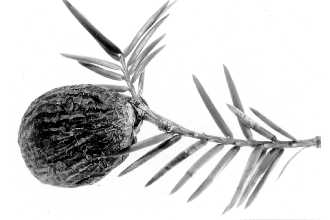
Propagation
Seed germination requires four to five months of moist, warm conditions followed by mild cold stratification of similar length. It can be propagated by bare root, container plantings, cuttings and seed.
Diseases and Pests
Some diseases affecting the species are fungal root rot, stem and needles blights (Physalorspora and Macrophoma). Infected trees have responded well to fungicides and recovered to produce new growth. Other negative agents are feral pigs, which uproot seedlings, and deer damage from antler rub.
Uses
Seed germination requires four to five months of moist, warm conditions followed by mild cold stratification of similar length. It can be propagated by bare root, container plantings, cuttings and seed.
Diseases and Pests
Some diseases affecting the species are fungal root rot, stem and needles blights (Physalorspora and Macrophoma). Infected trees have responded well to fungicides and recovered to produce new growth. Other negative agents are feral pigs, which uproot seedlings, and deer damage from antler rub.
Uses
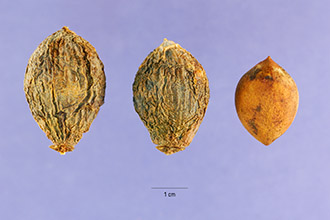
Photo courtesy USDA-NRCS PLANTS Database
The seeds have a woody seed coat and viable ones are rock hard when ripe. In contrast, seeds collected from diseased trees are soft and crumbly. Bark is .5 inches thick on mature trees and has irregular shallow fissures. Root depth is 40 inches and the active growth period is spring and summer.
Habitat
Florida Torreya is shade tolerant but older trees do better with full sun. It is adapted to medium textured soils with lime, preferring dark, moist, sandy loams and can be found in the forested ravines of the Apalachicola drainage system and northern Florida as an understory tree of hardwood hammocks. It requires 270 frost free days, annual rainfall of 30-60 inches, and has a minumum temperature of 12°F. Drought tolerance is low and it has no salt tolerance.
Habitat
Florida Torreya is shade tolerant but older trees do better with full sun. It is adapted to medium textured soils with lime, preferring dark, moist, sandy loams and can be found in the forested ravines of the Apalachicola drainage system and northern Florida as an understory tree of hardwood hammocks. It requires 270 frost free days, annual rainfall of 30-60 inches, and has a minumum temperature of 12°F. Drought tolerance is low and it has no salt tolerance.
Distribution maps courtesy: USDA-NRCS PLANTS Database
Photo citation: Steve Hurst @ USDA-NRCS PLANTS Database
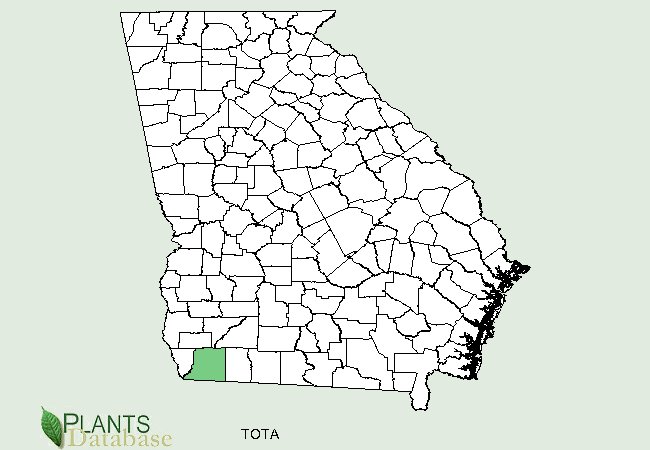
Distribution in Georgia
Florida Distribution
Sources:
Trees of North America- A guide to field identification-a Golden Field Guide from St. Martin's Press © 2002 By C. Frank Brockman p.20
The Encyclopedia of North American Trees by Sam Benvie. Firefly Books Ltd., 2000 Buffalo, NY © 2000 Sam Benvie p.262, 263
USDA, NRCS. 2011. The PLANTS Database (<http://plants.usda.gov/>, 22 August 2011). National Plant Data Team, Greensboro, NC 27401-4901 USA.
www.centerforplantconservation.org
US Dept. of Agriculture- Esser, Lora L. 1993. Torreya taxifolia. In: Fire Effects Information System, [Online]. U.S. Department of Agriculture, Forest Service, Rocky Mountain Research Station, Fire Sciences Laboratory (Producer). Available: http://www.fs.fed.us/database/feis/ [2011, August 22].
Trees of North America- A guide to field identification-a Golden Field Guide from St. Martin's Press © 2002 By C. Frank Brockman p.20
The Encyclopedia of North American Trees by Sam Benvie. Firefly Books Ltd., 2000 Buffalo, NY © 2000 Sam Benvie p.262, 263
USDA, NRCS. 2011. The PLANTS Database (<http://plants.usda.gov/>, 22 August 2011). National Plant Data Team, Greensboro, NC 27401-4901 USA.
www.centerforplantconservation.org
US Dept. of Agriculture- Esser, Lora L. 1993. Torreya taxifolia. In: Fire Effects Information System, [Online]. U.S. Department of Agriculture, Forest Service, Rocky Mountain Research Station, Fire Sciences Laboratory (Producer). Available: http://www.fs.fed.us/database/feis/ [2011, August 22].
Like all members of the Yew family, the needles and seeds are poisonous to livestock and people.

Want to add your tree to our picture gallery? Click here for details!
-Color denotes a tree that is rare or endangered




™

Custom Search

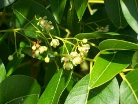
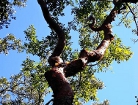

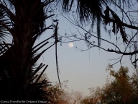
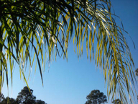
- Trees
- A-Z scientific
- A-Z by Common Name
- Families
- Aceraceae Maple Family
- Anacardiaceae Sumac Family
- Annonaceae Custard Apple Family
- Aquifoliaceae Holly Family
- Arecaceae, Palm Family
- Betulaceae Birch family
- Bignoniaceae Trumpet Creeper Family
- Burseraceae Frankincense Family
- Caprifoliaceae Honeysuckle Family
- Chrysobalanaceae Coco-plum Family
- Cornaceae Dogwood Family
- Cupressaceae Cypress Family
- Cyrillaceae Cyrilla Family
- Ebenaceae Ebony Family
- Ericaceae Heath Family
- Fabaceae Pea Family
- Fagaceae Beech Family
- Hamamelidaceae Witch Hazel Ffamily
- Hippocastanaceae Horse Chestnut Family
- Juglandaceae Walnut Family
- Lauraceae Laurel Family
- Leitneriaceae Corkwood Family
- Magnoliaceae Magnolia Family
- Meliaceae Mahogany Family
- Moraceae Mulberry Family
- Myricaceae Bayberry Family
- Myrsinaceae Myrsine Family
- Myrtaceae Myrtle Family
- Nyctaginaceae Four Oclock Family
- Olacaceae Olax Family
- Oleaceae Olive Family
- Pinaceae Pine Family
- Platanaceae Plane Tree Family
- Polygonaceae Buckwheat Family
- Rhamnaceae Buckthorn Family
- Rosaceae Rose Family
- Rubiaceae Madder Family
- Rutaceae Rue Family
- Salicaceae Willow Family
- Sapindaceae Soapberry Family
- Sapotaceae Sapodilla Family
- Simaroubaceae Quassia Family
- Styracaceae Storax Family
- Symplocaceae Sweetleaf Family
- Theaceae Tea Family
- Tiliaceae Lindon Family
- Ulmaceae Elm Family
- Taxaceae Yew Family
- Yucca Family
- Browse by State
- Rare or Endangered Species
- Trees_with_Special_Uses
- Tallest and Biggest
- Noxious Weeds
- Causes
- About Us
- Our Stores


• Habitat
• Uses
Florida Torreya,
Torreya taxifolia Arn
Torreya taxifolia Arn
Visit the Image Gallery for more pictures
Tree lists:
•A-Z by scientific
name
•A-Z by common
name
•By Family
For state A-Z list click state name below.
•A-Z by scientific
name
•A-Z by common
name
•By Family
For state A-Z list click state name below.
Common Names: Gopherwood, Florida Nutmeg, Polecat Wood, Stinking Cedar
tall, 35 inches in diameter. Florida Torreya is dioecious, blooms in mid spring (although the flower is inconspicuous) and produces a blue colored ovule or aril 1.2-1.6 inches long. The fruit is fleshy at first then turning leathery at maturity. Reproduction begins when the tree is around 20 years old. Leaves are flat, evergreen, stiff needles in ranks (rows) of 2 on opposite sides of the branch and have a foul odor.
Uses of the Florida Torreya, past and present, include Christmas tree products and nursery stock. In fact, heavy harvesting for use in Christmas decorations is partially to blame for this native species' modern rarity. Due this and its consequential Federal endangered status, currently there is no commercial value. The wood, however, is yellow, durable and fine grained.

